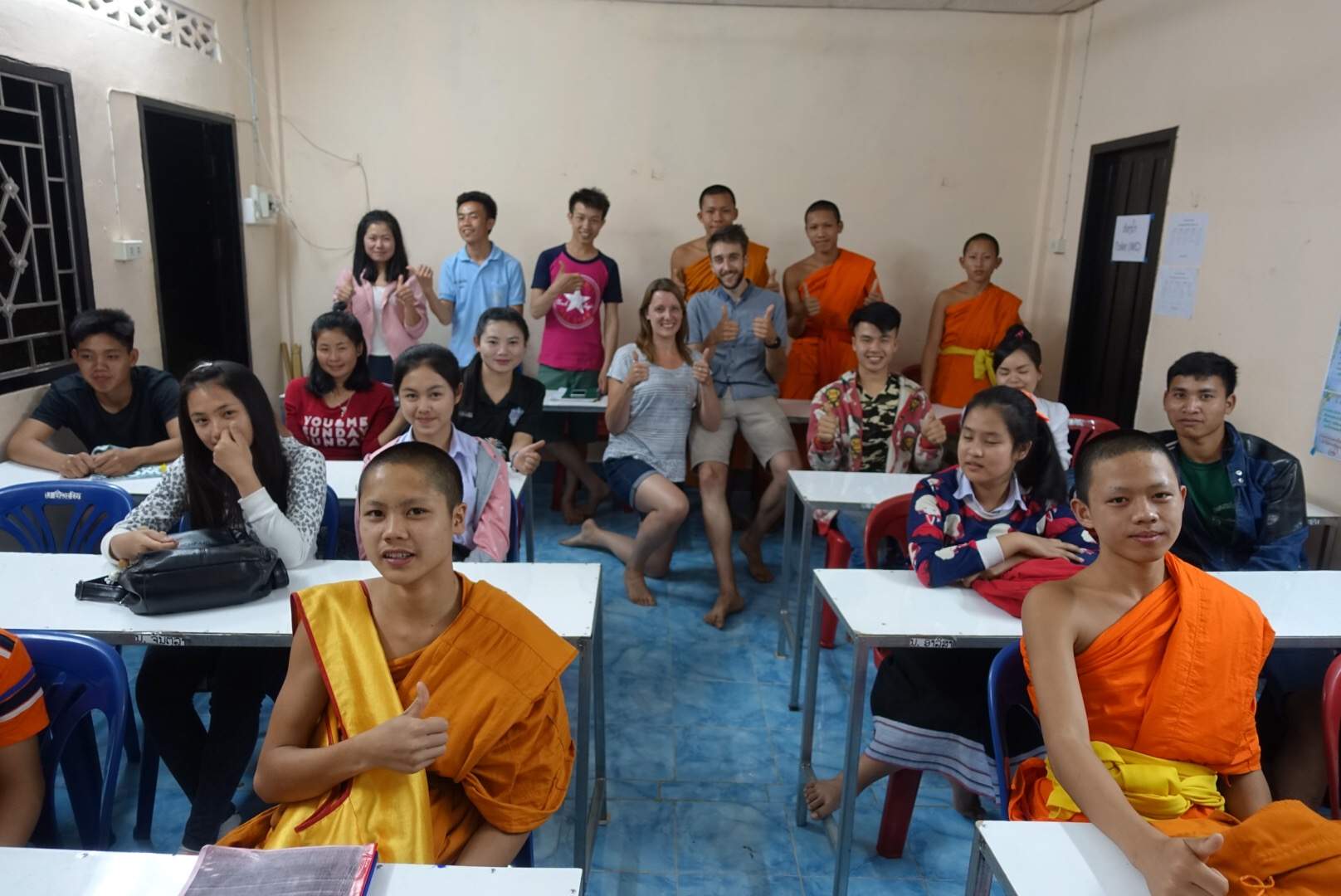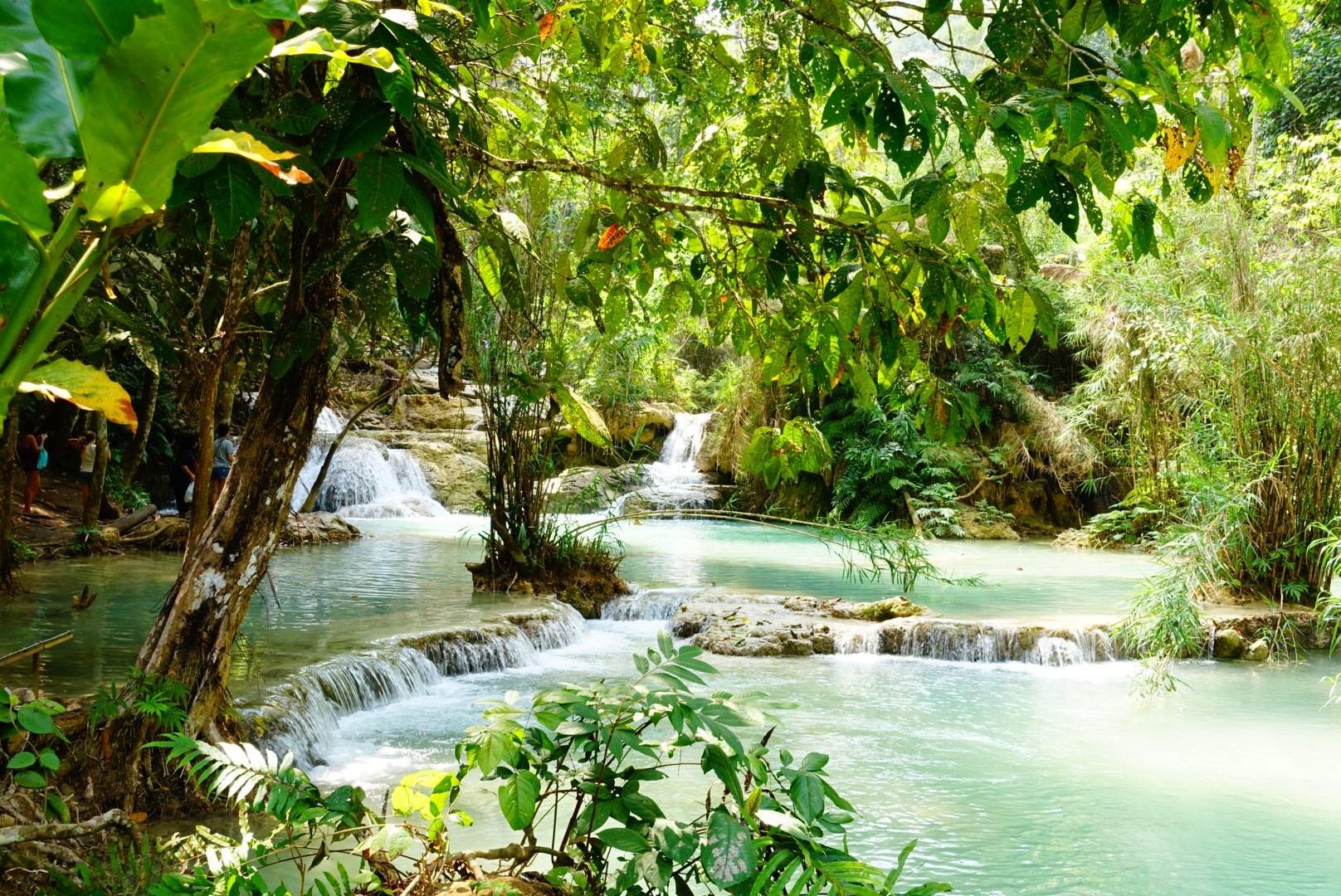“I can see you”
The driver of a black estate has stopped a short way from us on the dusty road. We’re hot and sweaty, and the remains of an ice cream is still making its way down into my stomach, and apparently, onto my shorts also.
Behind us lies Wat Xiang Thong temple, where I’ve been practicing my ability to sound a gong with only my hands. This gong is smaller than I’ve seen before in Thailand and the technique is different; I struggle for a while to make a sound audible over the scratching of my fingers against the bare metal. And then, the resonance of the dinner plate sized disk reverberates around the room as people turn to orient towards the sound.
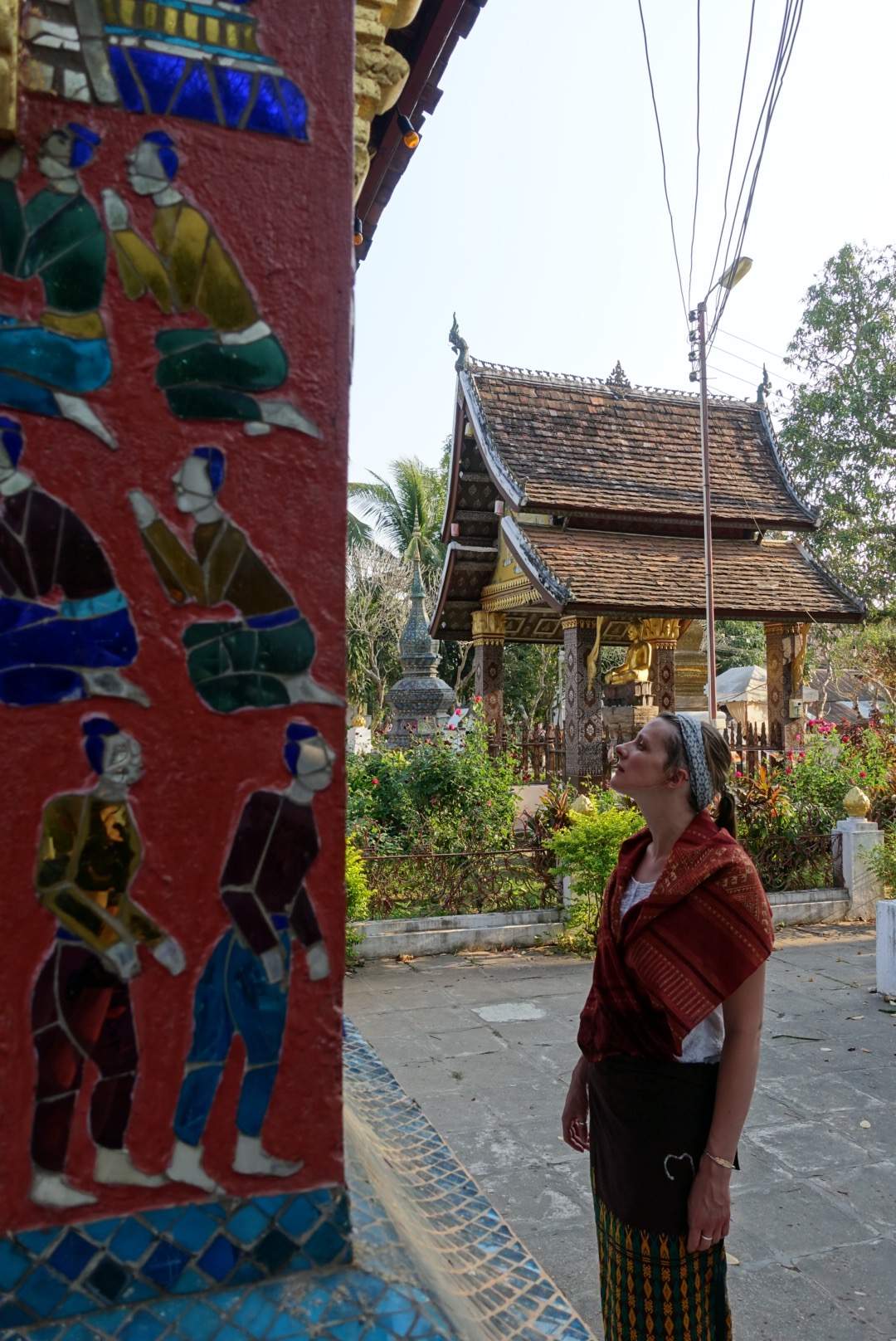
The car that now lies in front of us stands out from the battered motorcycles scattered around the otherwise empty road. It is clean, and our surroundings reflect in the bodywork. We walk over to it, get in, and it pulls away.
We don’t know our driver, and only have a vague sense of where we are heading. Fifteen minutes earlier we had been walking down a side street when a flyer caught Abi’s eye, pinned to a wall fronting Mount Phou Si.
“Volunteers Needed”
Now, we’re heading out of the town. We learn our driver is Kon, and we’re on our way back to school.
Teaching English, learning Laos
Kon drives us to a primary school on the outskirts of Luang Prabang, where the children are just arriving for their optional after-school class: English. Today they’re more excited and inquisitive than usual, and they’re not hiding it, as they sneak glances and giggles in our direction.
We’re given a bottle of water and take a seat to the side, observing the start of the lesson as we lather ourselves with deet in a laborious attempt to ward off the next round of bugs. We are still none-the-wiser of what we’re going to be doing. At this point when presented with this situation, a thought might enter your mind, as it did mine:
“Crap, I’ve never taught in a school before! What if they’re really advanced! … What’s a possessive pronoun again?!”
We wait with half-baited breath as Kon starts chalking letters on the blackboard.
“January… February… ”
Ok, phew. We’re good.
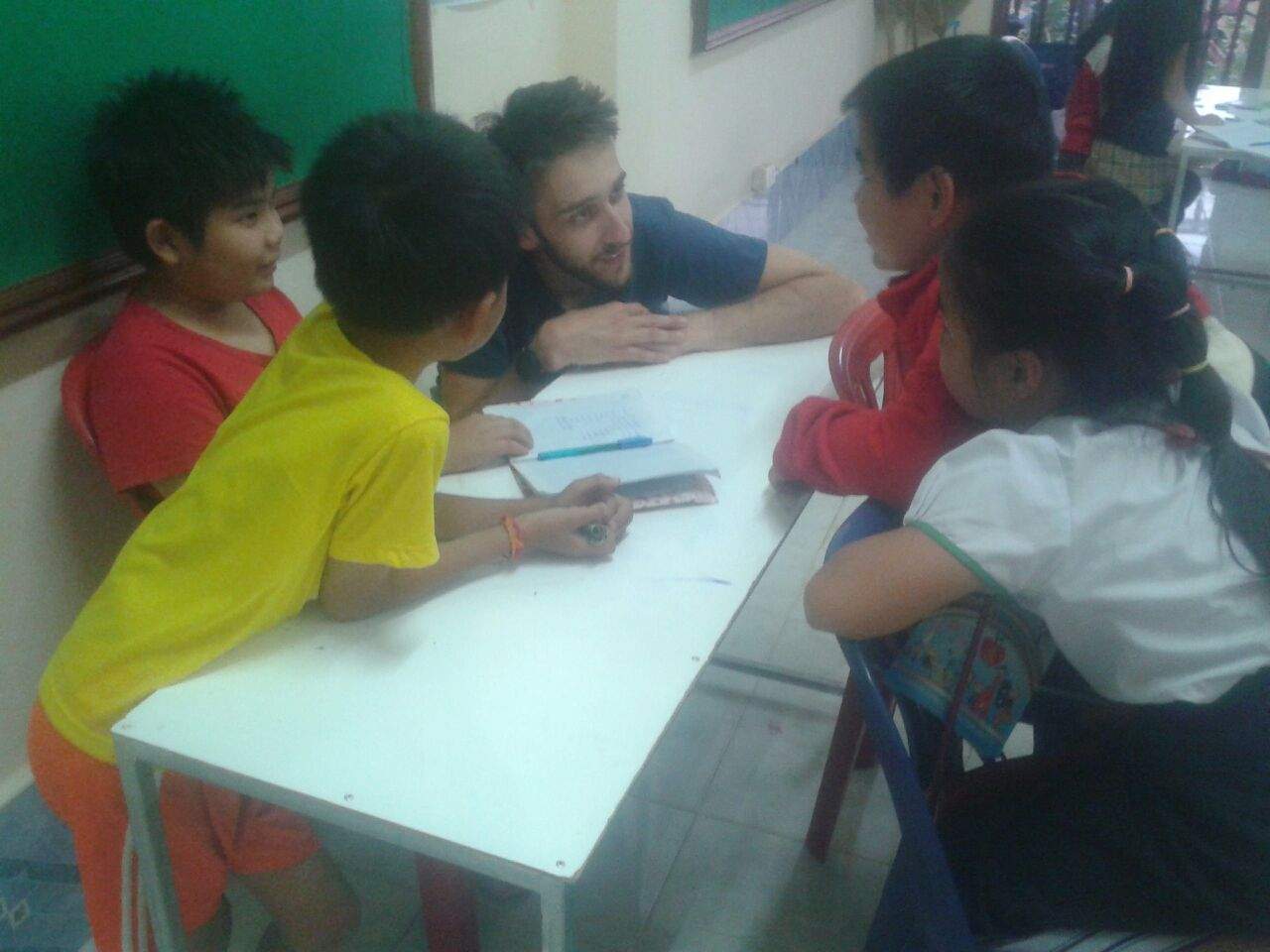
We spend an hour leading the class, having them go through the months of the year in unison and individually, and put them into simple sentences about themselves.
“My birthday is in May… when is your birthday?”
As I am walking around, I notice neatly handwritten tables with the English months and their Laos equivalent in their exercise books. It seems they have gone through this before in a previous lesson or homework, some more thoroughly than others.
After ten minutes we’ve exhausted our stock of months to make sentences with and it feels like we’re starting to repeat ourselves as we pass from table to table making sure everyone has a chance to practice. There’s only so many times you can ask a person what their favourite month is before they start to think you have amnesia. Flipping back a couple of pages in one of their books we discover a gold mine of building blocks; days of the week and numbers. Great!
This new depth is enough to keep the class engaged, until at the end of the hour and with shrieks of glee from the class, Kon presents us with a stack of picture cards. Aha, bingo! Literally.
The kids are gathered in small groups with grids of cards laid out in front of them. We’re calling the cards.
“Table”. “Orange”. “House”…. “Car”. “Tree”.
“Bingo! Bingo!”
Nice work! They earn some points that get added to a total for their team. I’m hoping it translates to chocolate or some other delectable treat at the end of term.
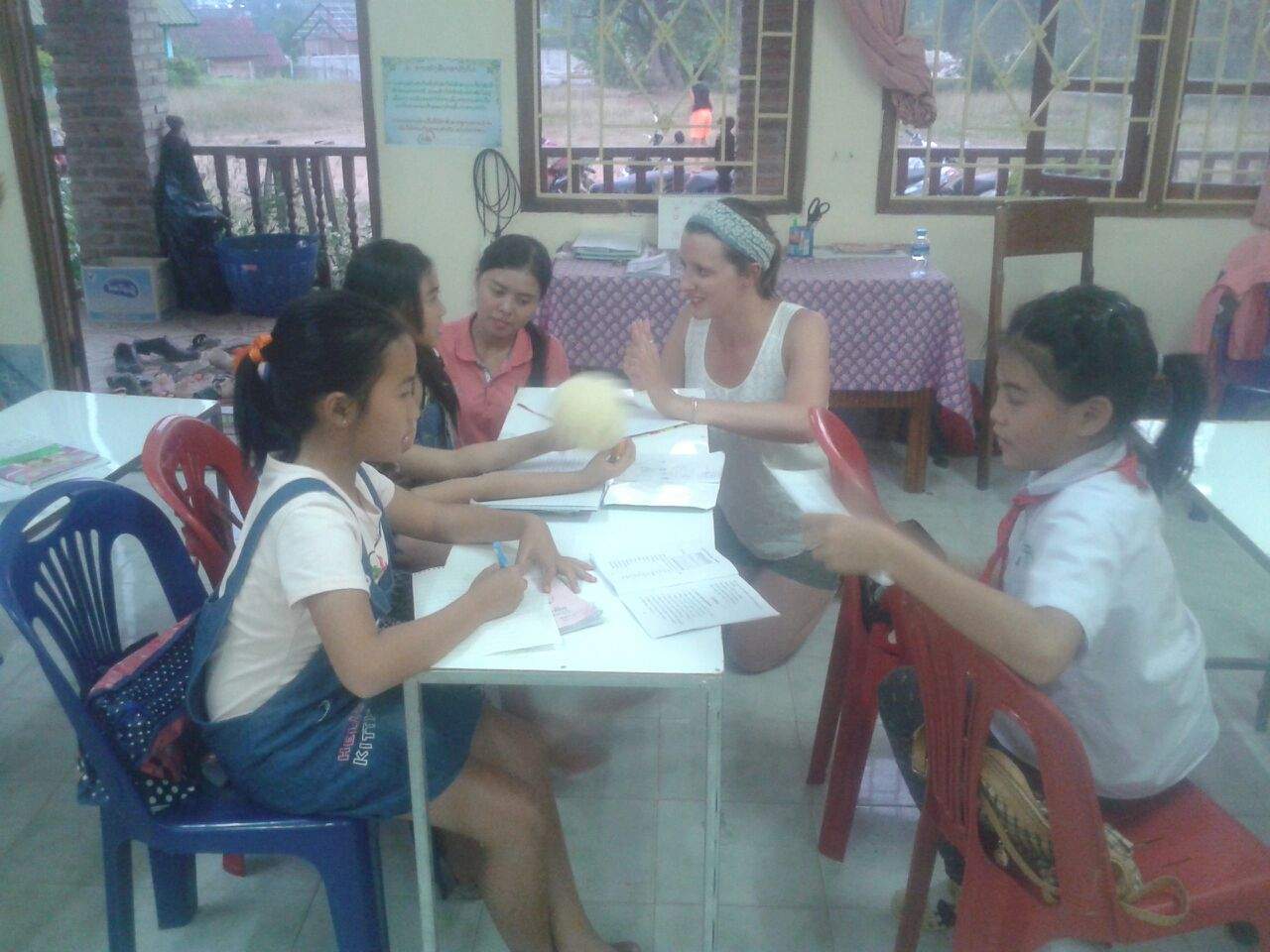
Ah, there’s not a 4×4 in sight! Instead, an assortment of scooters and motorbikes of varying wear are waiting to whisk the class home.
But some parents also stop to practice a few words with us; they seem pretty happy with the opportunity, we’re happy to oblige! ‘Baw Pen Nyung!’
This was not the first thing we thought we would be doing this evening, but was very rewarding and fun. With that feeling Kon drops us back at our bed-bug ridden hostel, and back into the real world.
Monks on the Mount
Earlier, we hiked up to the top of Mount Phou Si, a 100m high hill sitting in the centre of the old town. From the top are some great panoramic views looking out in different directions towards the Mekong river on one side and the Nam Khan river on the other. It’s a great thing to do when you first arrive to get an idea of the area, or so we heard and then validated.
Climbing up the Mount is a popular thing to do. It can get busy around sunset, but a little earlier in the day there were only a handful of others walking around with us. It’s free apart from the summit, which will see you cough up 20k kip (~£2).
This area is flowing with Buddhist activity; Halfway up the hill is Wat Tham Phou Si, and at the summit is Wat Chom Si. At the base, we discovered a monk school. One of the staff happily gave us some info, and pointed us towards some steps heading up to the Mount. In front of us, a group of monks on their break were getting a head start.
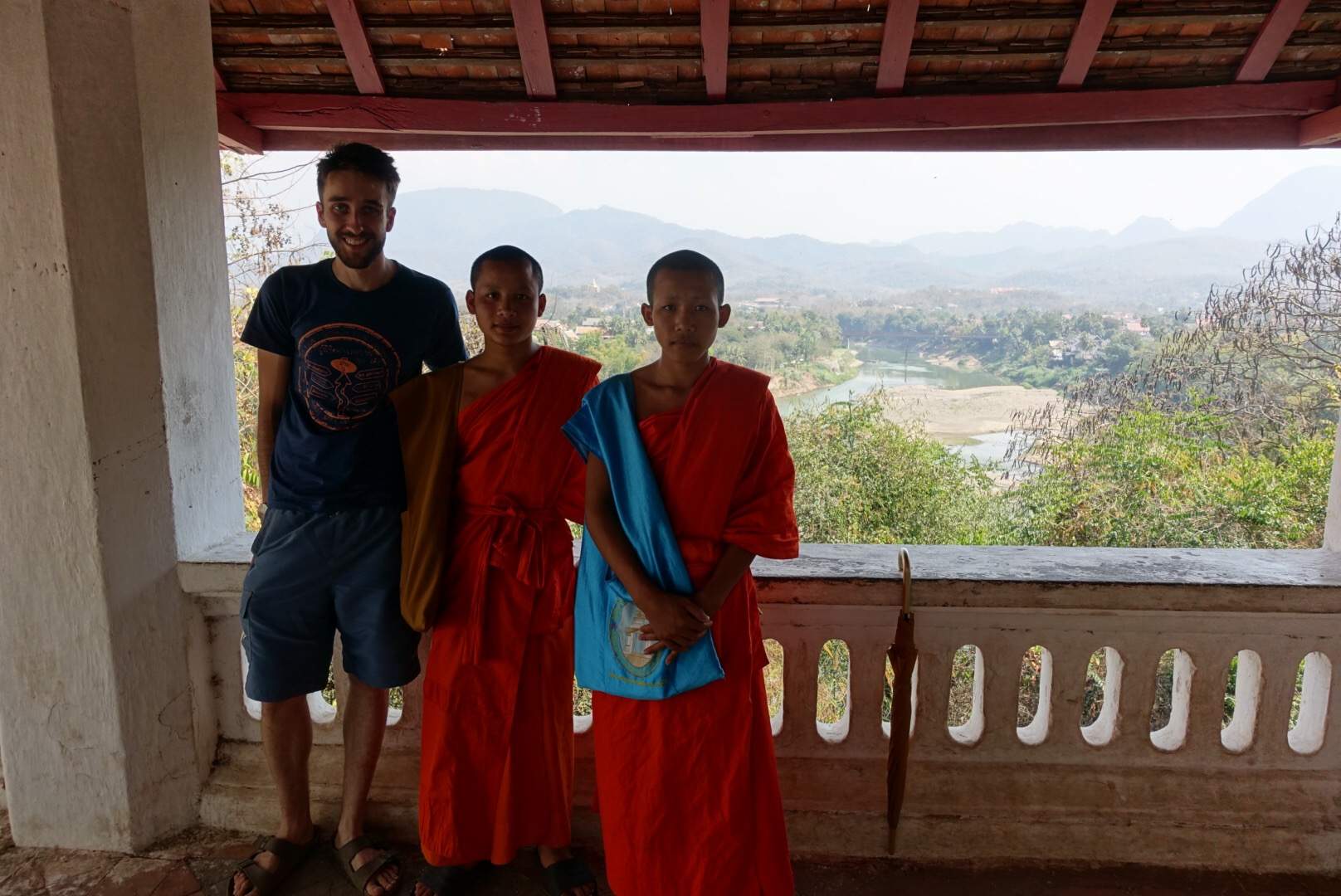
Half way up a couple of young monks stopped to look at the view. With a mixture of my very basic Laos words and their broken English we found out a little about each other.
Mi and his friend (sorry, forgot the name!) live in a temple around the corner during the week. Every weekend they take a boat back to their village, and pointed towards it to show us. While they’re studying they have everyday subjects, interspersed with Buddhist teachings. Of course, they also enjoy movies, playing with their phones and Facebook, and were happy when I joined them for a selfie.
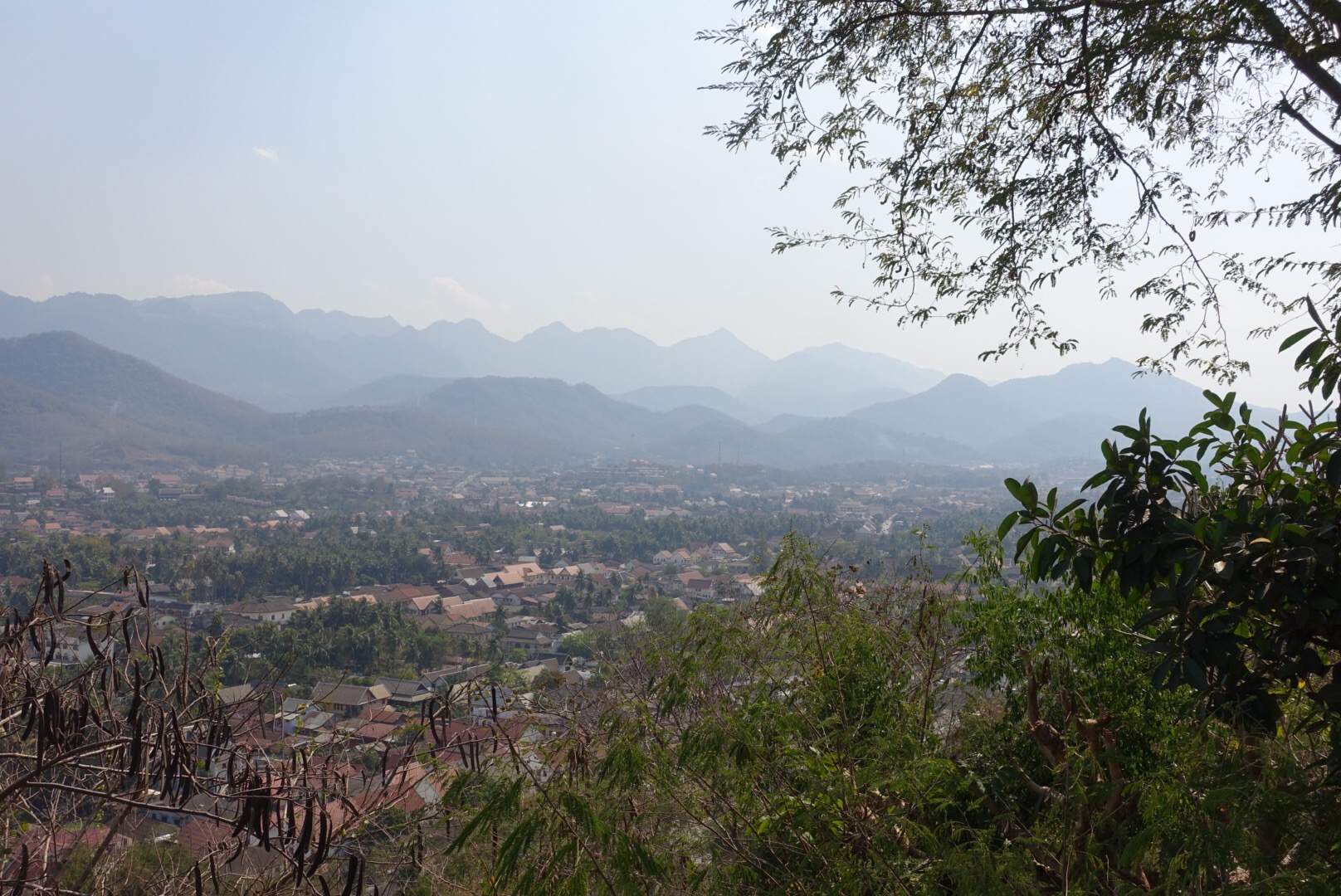
Luang Prabang Night Market
Heading down from the Mount puts you near the location of the night market, which happens every evening from 5-11pm. It starts at Wat Mai and runs along Sisavangvong Road. The road is closed to traffic, which is necessary not just for ease of access. Stalls line, or rather sit, straight down the middle of the road as well as bordering on both sides.
The area is bustling with people, especially tourists; Luang Prabang attracts a lot of them with the ease of access provided from the international airport. Despite that, it’s worth visiting, and we enjoyed walking around and checking out all of the goods on display.
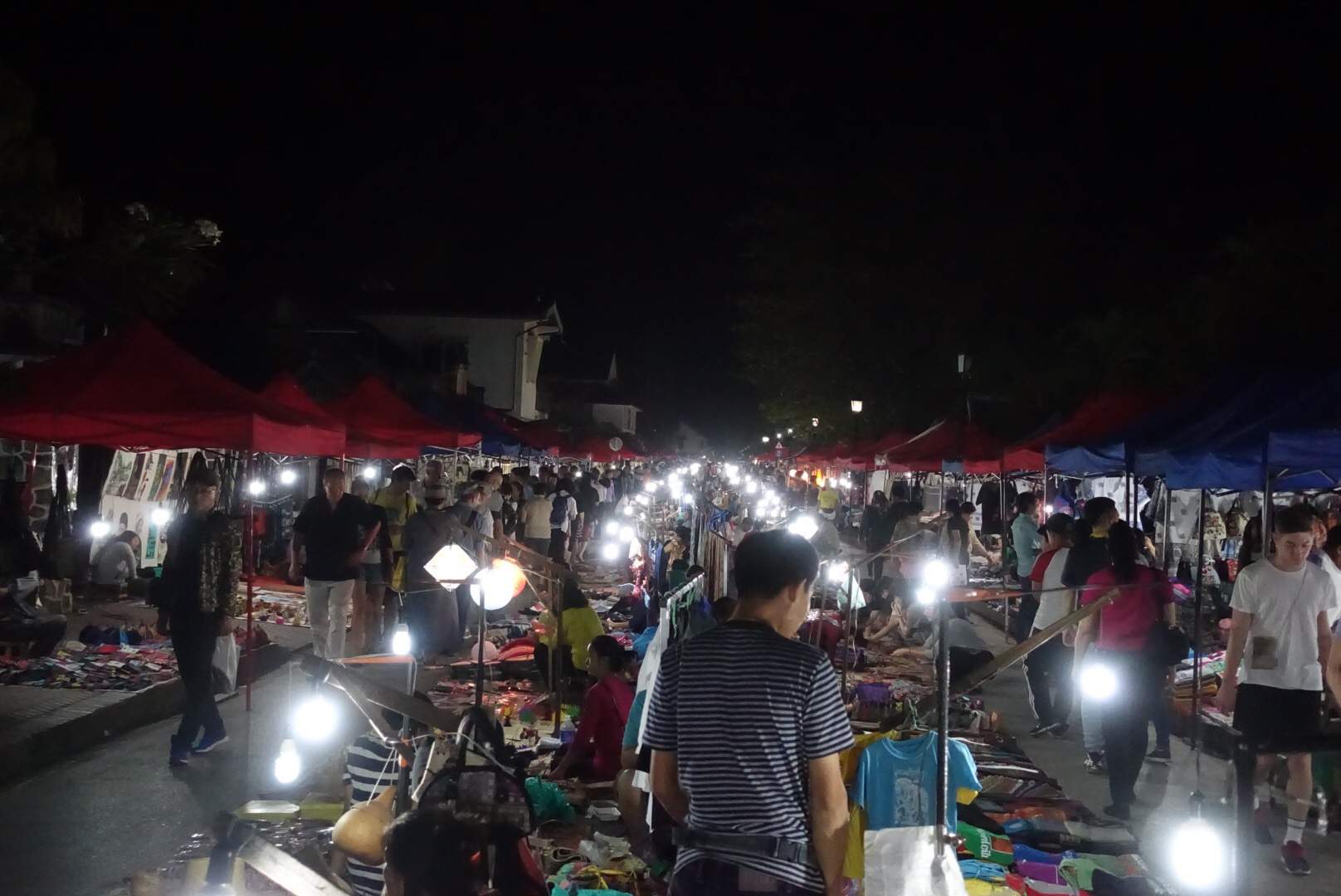
After walking around for a while, you start to see the same wares over and over again. Table runners, bags, t-shirts, fruit bowls, cards… hey we’re back to table runners! It reminded me of that Simpsons episode where Bart and Lisa are walking through the Itchy and Scratchy animation studios. You know, this one.
Travelling with hand luggage only means an easy get-out-of-sale free card in these situations, as you can’t physically take anything home unless it is super small and super light. I’m very transparently pleased by this. That is, until something slightly less backpacker friendly catches someone’s eye…
“Oo pretty”
Looks like we’ll be shipping a package home then! To be fair, it is a nice table runner, even if I have seen it multiple times.
Situated down one of the side streets is what my eye was looking out for. We had heard word of a very cheap and very tasty buffet just off from the market. We found it, and the murmurings were true.
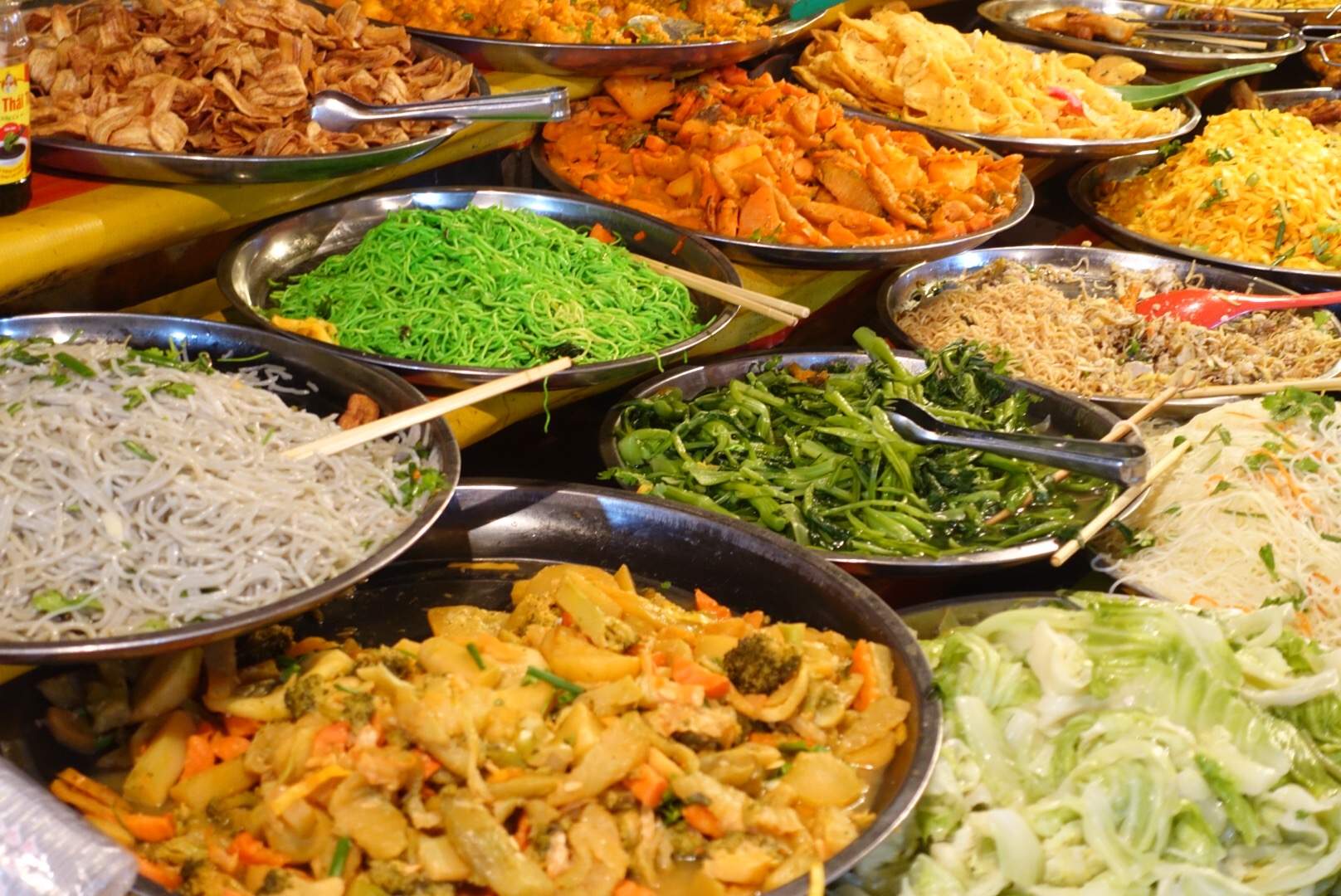
Top tip: You can have as much as you want on your plate, but you can only fill it once. No seconds! There’s also a number of different buffet options next to each other in the same alley. The alley is just off from the market, on the side towards the Mekong.
Laos doesn’t have the same prevalence of great street food (read: pat thai) that Thailand has, so it was nice to find this as an alternative to some of the more expensive restaurants.
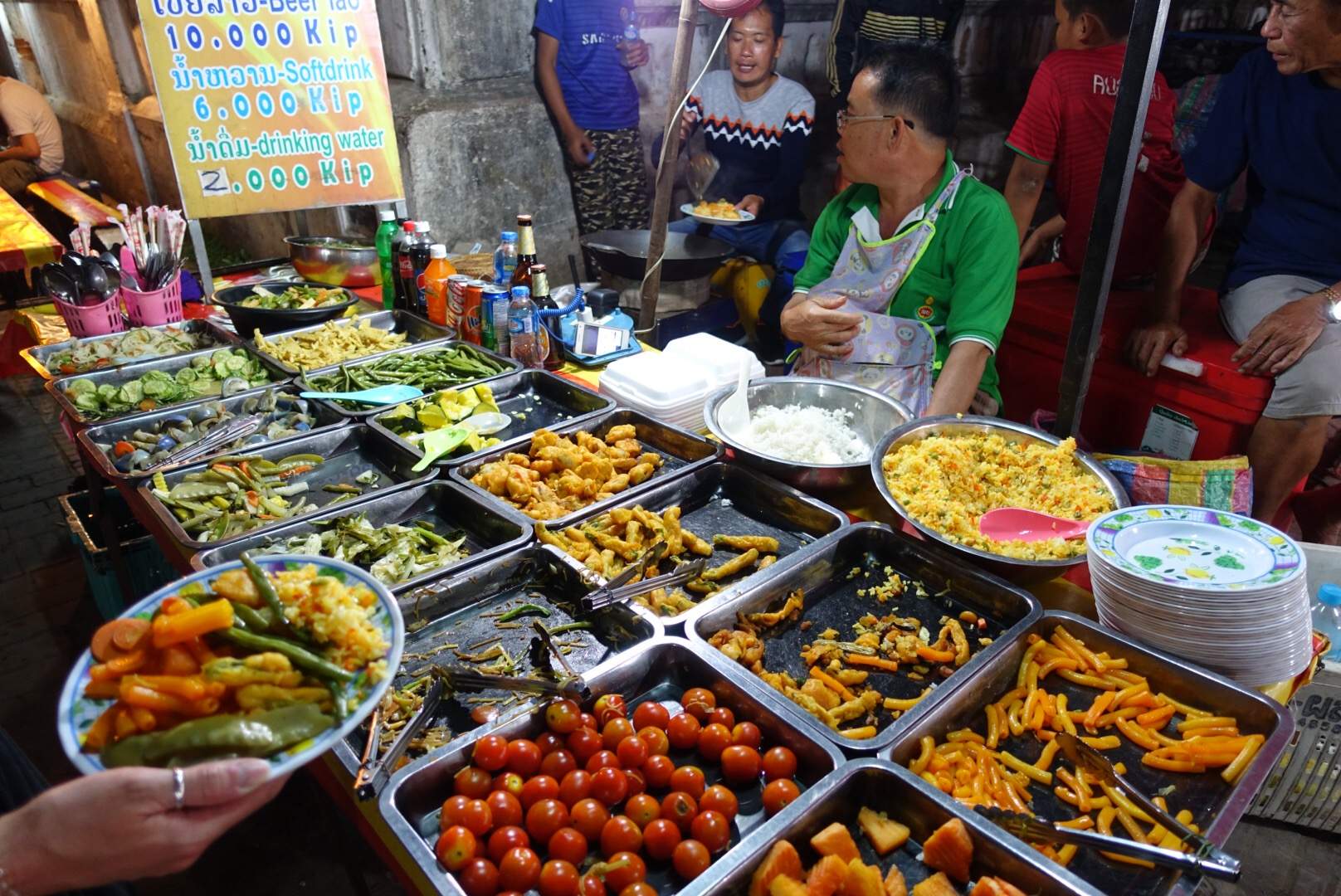
We ate around here a couple of nights. Not only tasty, but it is well suited to the backpacker; Travelling light applies to everything, including your wallet.
After the night market has sufficiently satiated your hunger, you might be in search of something to do. With limited options, the main hive of activity seems to be centred at Utopia. This is a bar and restaurant located down a winding path to a spot of land on the banks of the Nam Khan river.
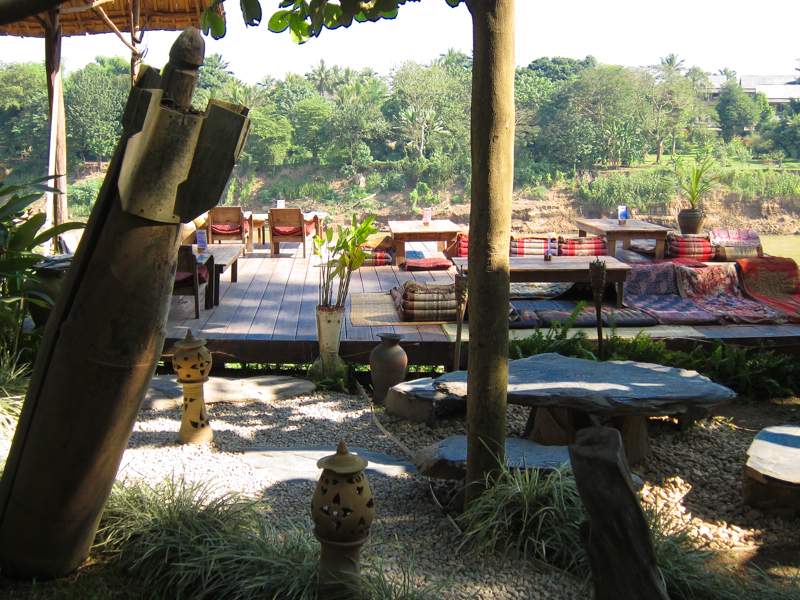
It is not your standard bar, but is more like a scenic, laid-back open-air hangout with nice views, food, and cheap drinks, enjoyed either from the comfort of a chair or cushioned mat. We met some friends here and enjoyed some Beer Lao. At 7k kip or around 75p… drink up!
But, not for too long. Around 11pm when the bar is crowded to the gunnels, it shuts down. Actually, every bar does. Luang Prabang enforces a strict curfew of 11.30pm for all businesses. We were unaware of this on our first night, so it was quite a sight watching the most popular place in town literally empty in a matter of minutes.
At this point, the only thing left to do is hop into one of the many tuk-tuks that have now arrived at the entrance.
And go ten-pin bowling.
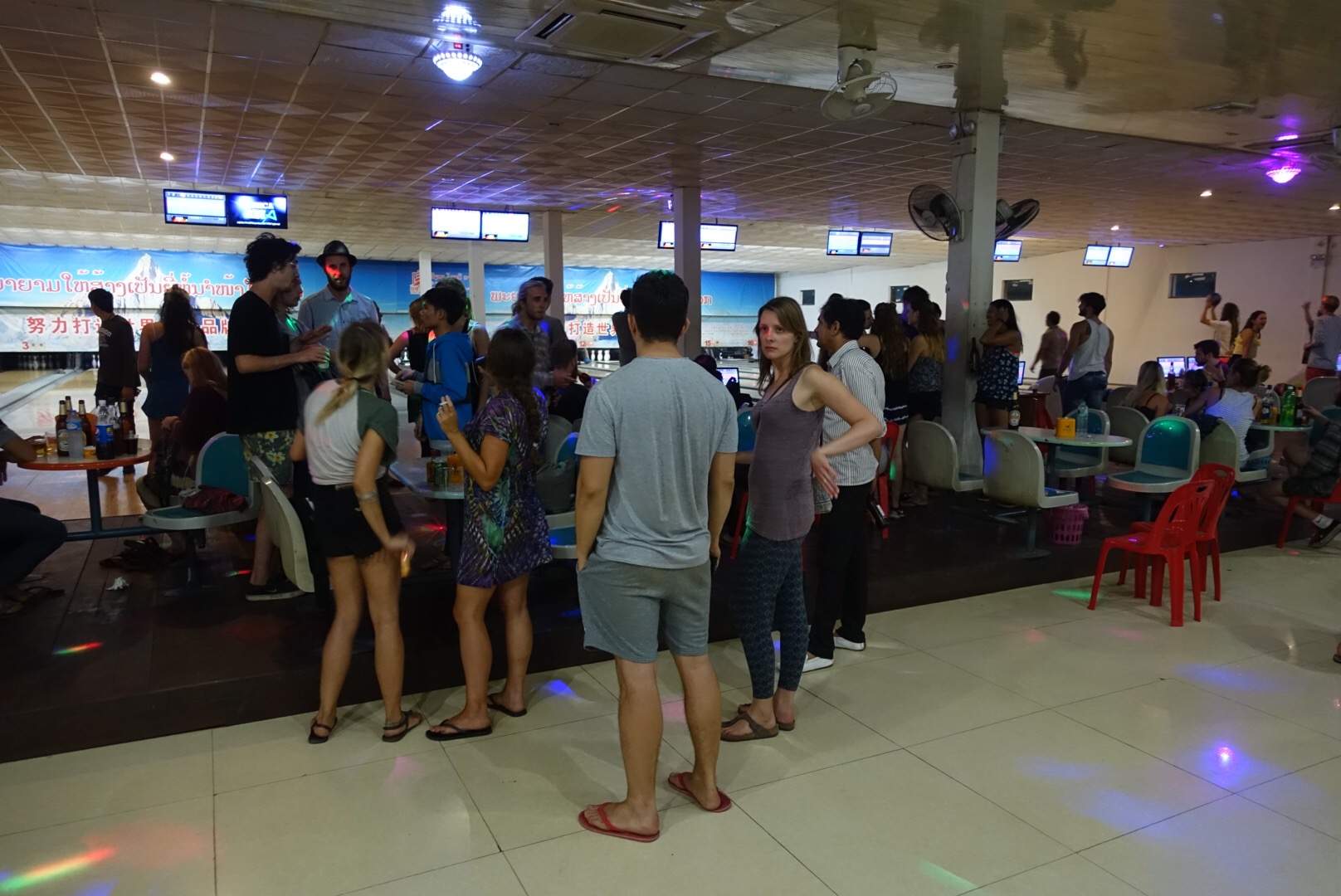
That’s right, the only “officially” licensed place for social life after 11.30pm is the bowling alley on the edge of town. If you ever wondered what it feels like to finish a night out by knocking down some pins with a bunch of alcohol infused young adults then yes… it is a bit surreal.
But you can grab yourself another Beer Lao, even if it is a little more pricey at 10k kip (~£1). Monopoly markup!
Kuang Si Falls
What about daytime activities? This entire city was given UNESCO World Heritage status in 1995, so just walking around and stopping by some temples and cafes is rewarding.
Then if you decide to look up ‘things to do in Luang Prabang’, you will almost certainly be told to visit the Kuang Si Falls. This three-tiered waterfall is 29km South of the city, and is extremely popular. But fortunately, unlike a lot of hyped-up places, this one is worth it. It is a beautiful natural sight, well maintained and free of litter. This is one of those picture-perfect places you imagine when first dreaming of going travelling.
The sound of the water cascading over the ridges constrasts with the still pools at each level. You’re not limited to looking at it from a walkway either, this is natures’ lido, and swimming is a must.
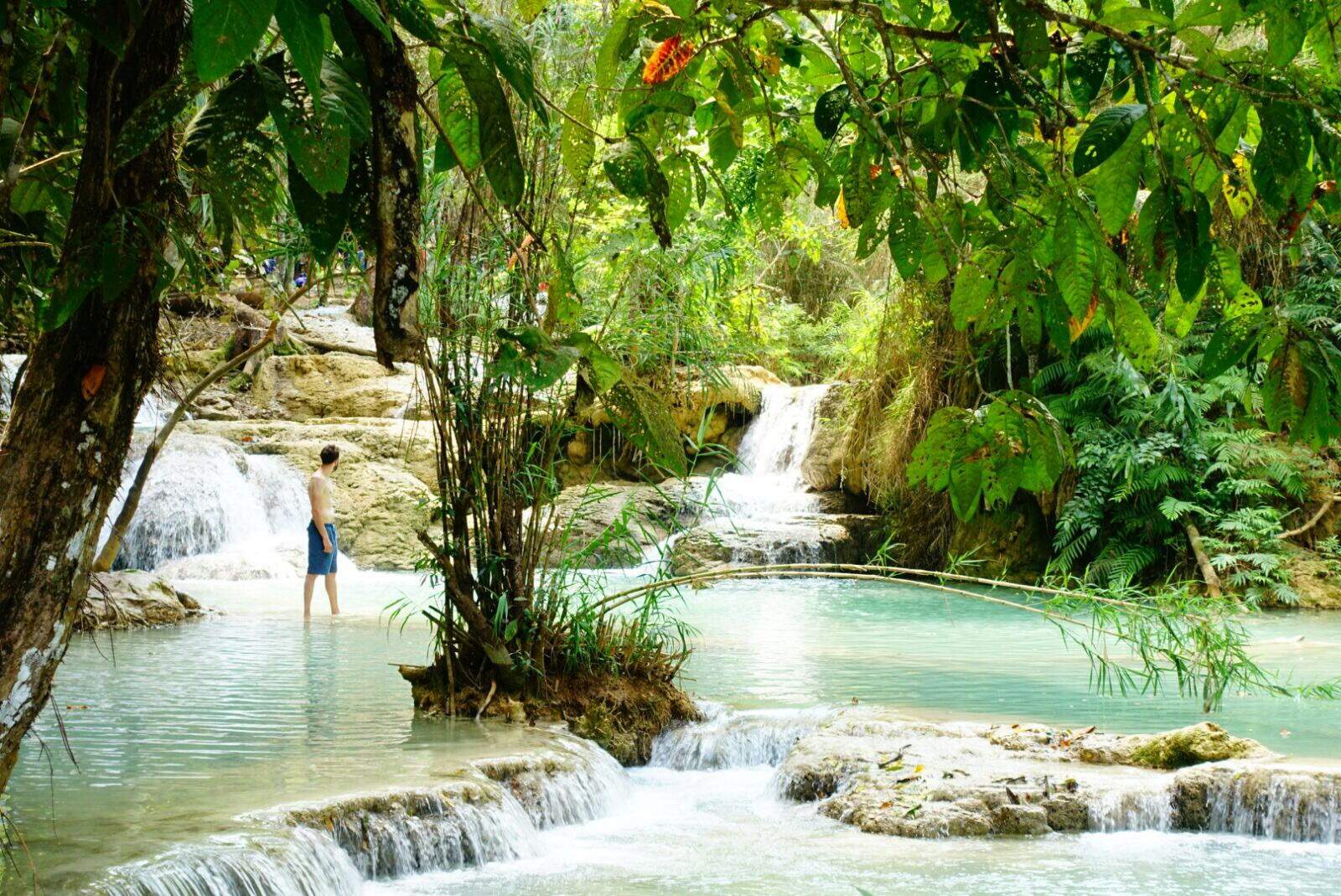
Even if you have not heard of the falls, you will have after just walking around Luang Prabang. Every tuk-tuk or taxi driver is ready to spot a tourist that isn’t suitably wet enough to have already paid a visit, and offer to whisk you there. Numerous tours also leave every day and cram a selfie-stick loving body onto every seat. This is the downside, one that plagues so many places in Asia.
As an independent traveller though, you can maximise your time with fewer people. The trick? As usual, go early. A lot of the tours will not leave until later in the morning. We drove up on a bike before the crowds, and left just as they were starting to get annoying. Do the same!
Entry to the falls costs 20k kip (~£2), with parking 2k kip (~20p). That is a lot less than you will pay to take a tour, as you’re not paying your driver to wait outside for your allotted time of enjoyment.
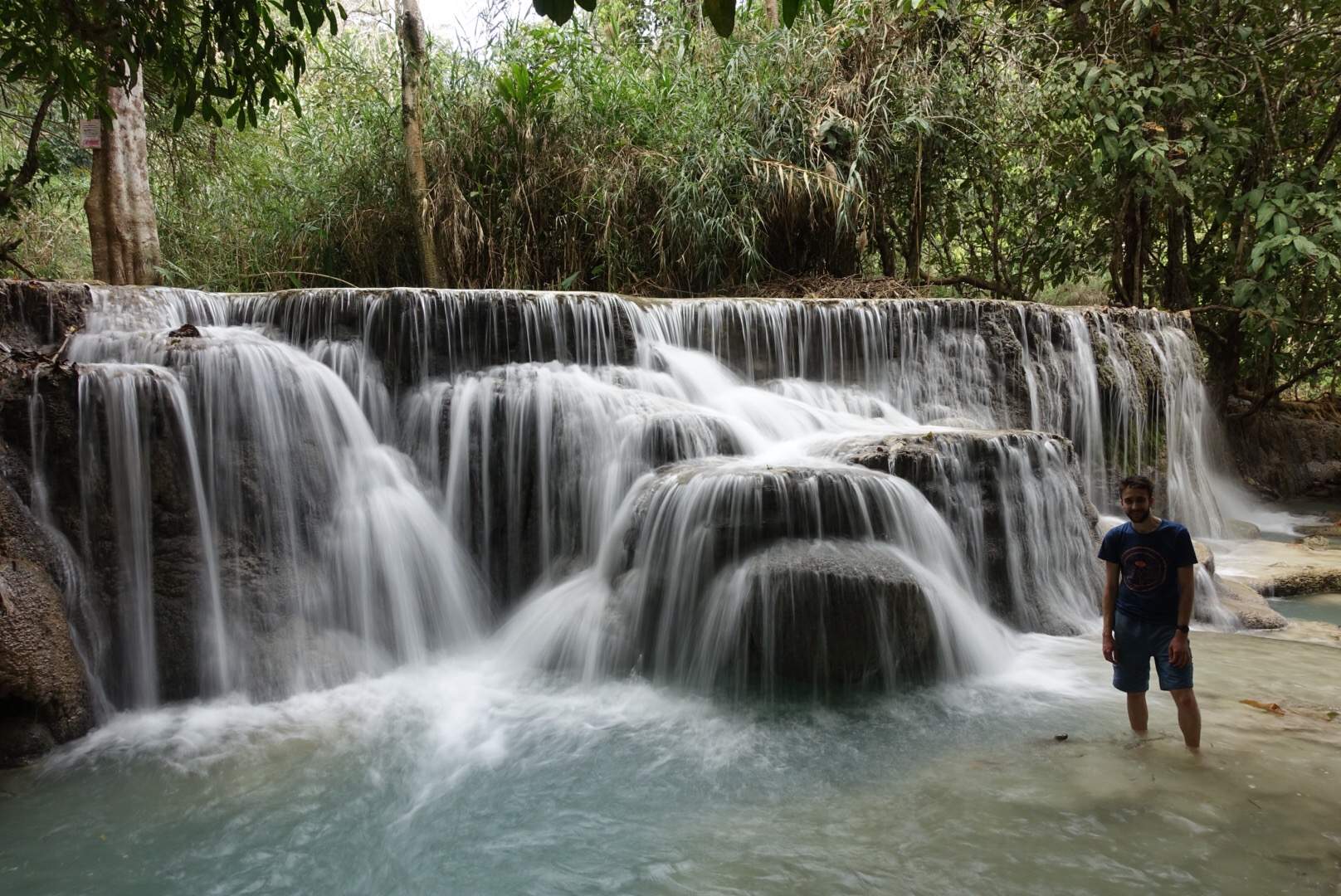
Living in the UK, seeing a waterfall is about as synonymous as taking a dip in your nearest sports centres’ leisure pool. This means the first couple of times you find yourself swimming around a real plunge pool is fantastically fresh. It turns out though that other parts of the world are not so waterfall deprived, and you start to see them cropping up on the map like Starbucks. “What’s there to do around here? Oh… there’s a waterfall we could check out”. Kuang Si was one of the beautiful ones, that stands out from the others.
UXO Laos
Sadly, Laos isn’t all just temples and waterfalls. It has had a difficult recent history, and holds the unenviable record for being the most bombed country on the entire planet. I only learnt this after we drove back to the city and stopped off at UXO Laos, and found out about the great work they are doing.
During the Vietnam war more than 580,000 bombing missions took place on Laos. To put that into perspective, that is equivalent to one bombing mission every eight minutes, 24 hours a day, for nine years.
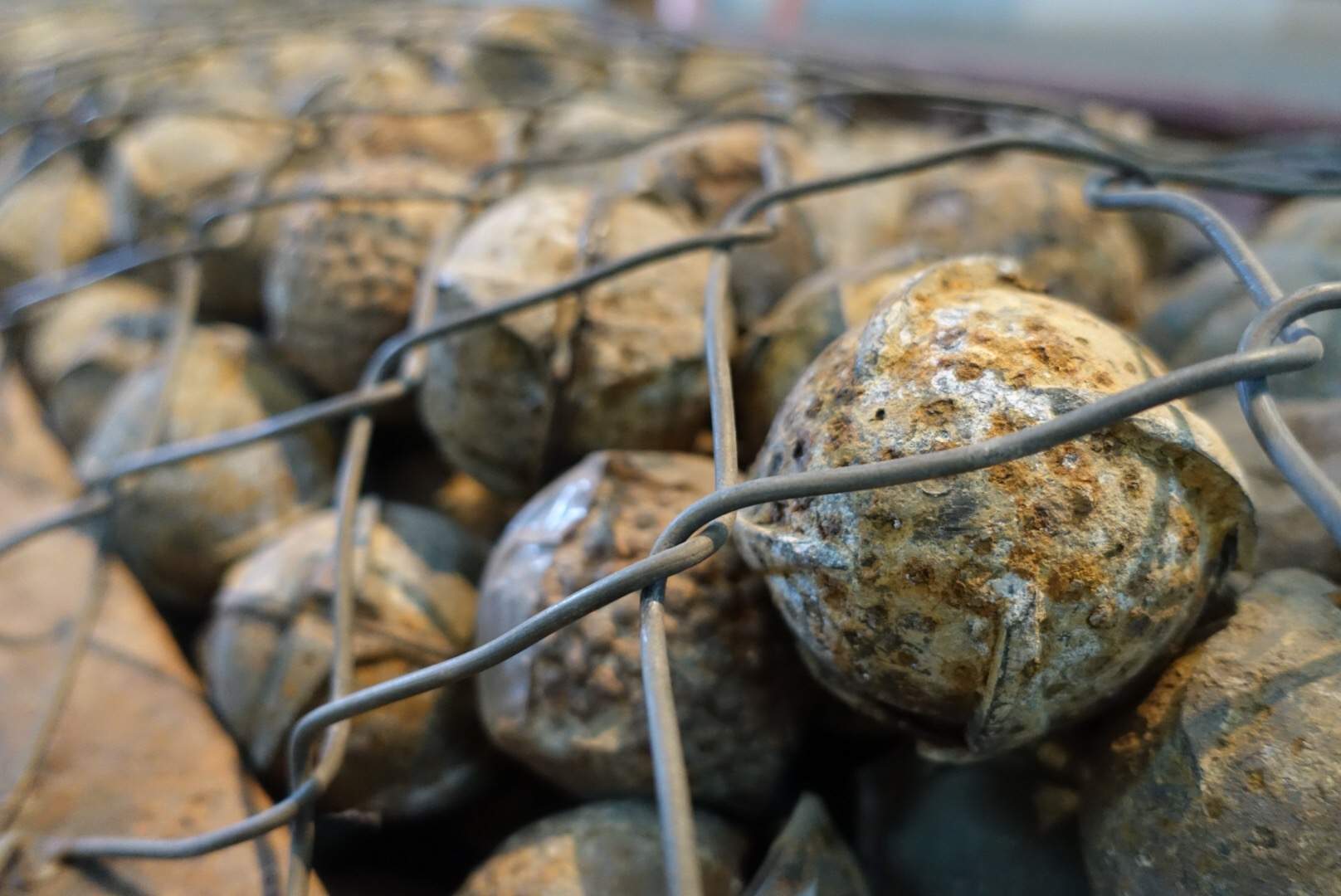
Of the 270 million cluster “bombies” that were dropped, 80 million failed to detonate. Today, 25% of Laos villages have UXO (unexploded ordinance) lying in the ground. It is horrific.
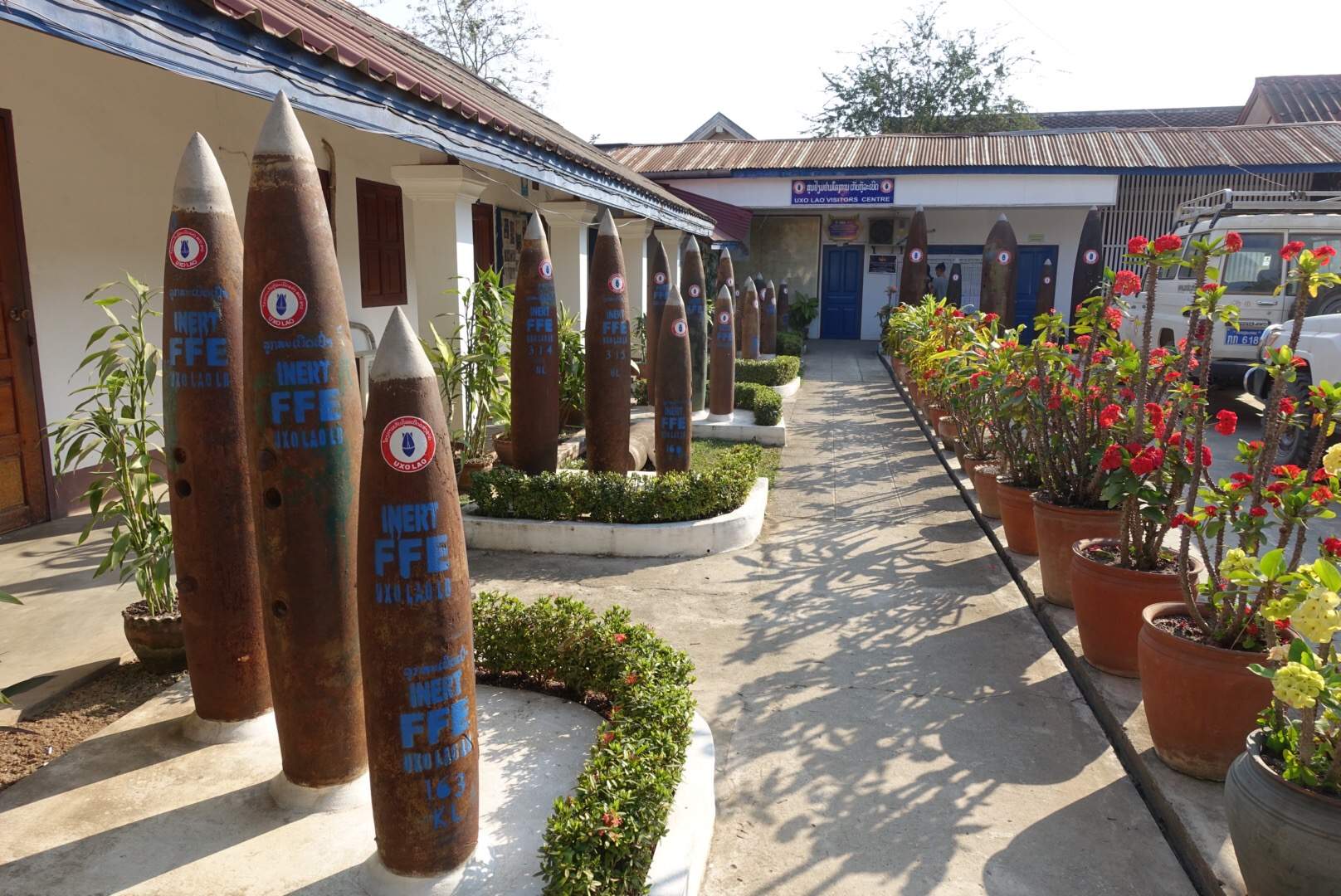
Inside you can learn about UXO and its many forms, how it is discovered and removed, and what it means to live in a country filled with it.
One discovery that stood out to me was in the field of a primary school. A photo shows the cordoned off grass with flags to mark the danger of imminent death. The day before, children were running around the field playing games.
Some 40% of the casualties in the last decade were children, not surprising when the bombies look like small balls to be played with. A lot of the rest are scrap metal hunters, driven to the perilous task of seeking out the ordinance to sell for money to look after their families.
UXO Laos is working to educate the locals, aid the cleanup effort, and provide support and rehabilitation for victims. I highly recommend paying a visit if you are in the area.
Back to School
A few days after arriving in Laos we left the city and headed up north on a bus to Nong Khiaw. After the sometimes theme park feel of Luang Prabang, it was quite a refreshing change, and free from the masses. There is a great and somewhat challenging hike up to a viewpoint, fantastic sunsets, and a chance to take a bicycle out the town and into the villages to explore the real Laos, and get a feel for local life.
We rented a couple of bicycles and did this, but after a while I realised I would much rather be running instead. Naturally, I hid my bike behind a bush and ran after Abi’s bike with first flip flops and then bare feet (when the footwear became too impractical). We passed through a few villages where the locals, for some reason, gave me interesting looks as I high-fived their delighting kids and continued on my way. Great run!
And then after a few days, we headed back down on the bus again, and straight into the classroom. We had enjoyed it so much, we decided to teach again at a different school. This time, we would be teaching older kids.
As we waited at the start of the lesson, that fleeting thought entered again…
“Uh-oh, what if they’re really advanced this time! They’re much older than the first class, and they’re already talking to us in English!”
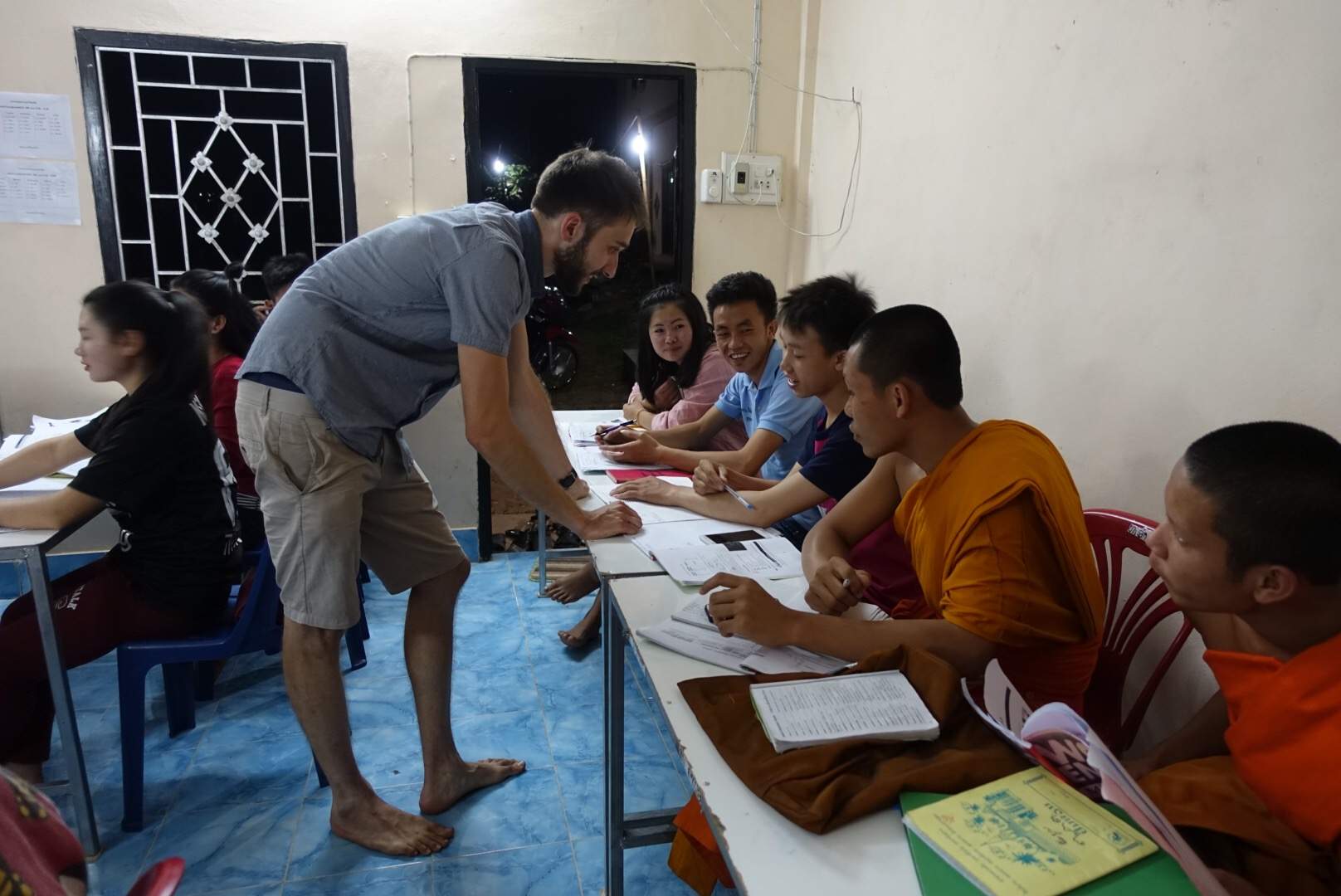
The class stared with their teacher having us read some sentences on the board.
“I would like to see my sister”
“They would like to go to your house”
“This is my pen”
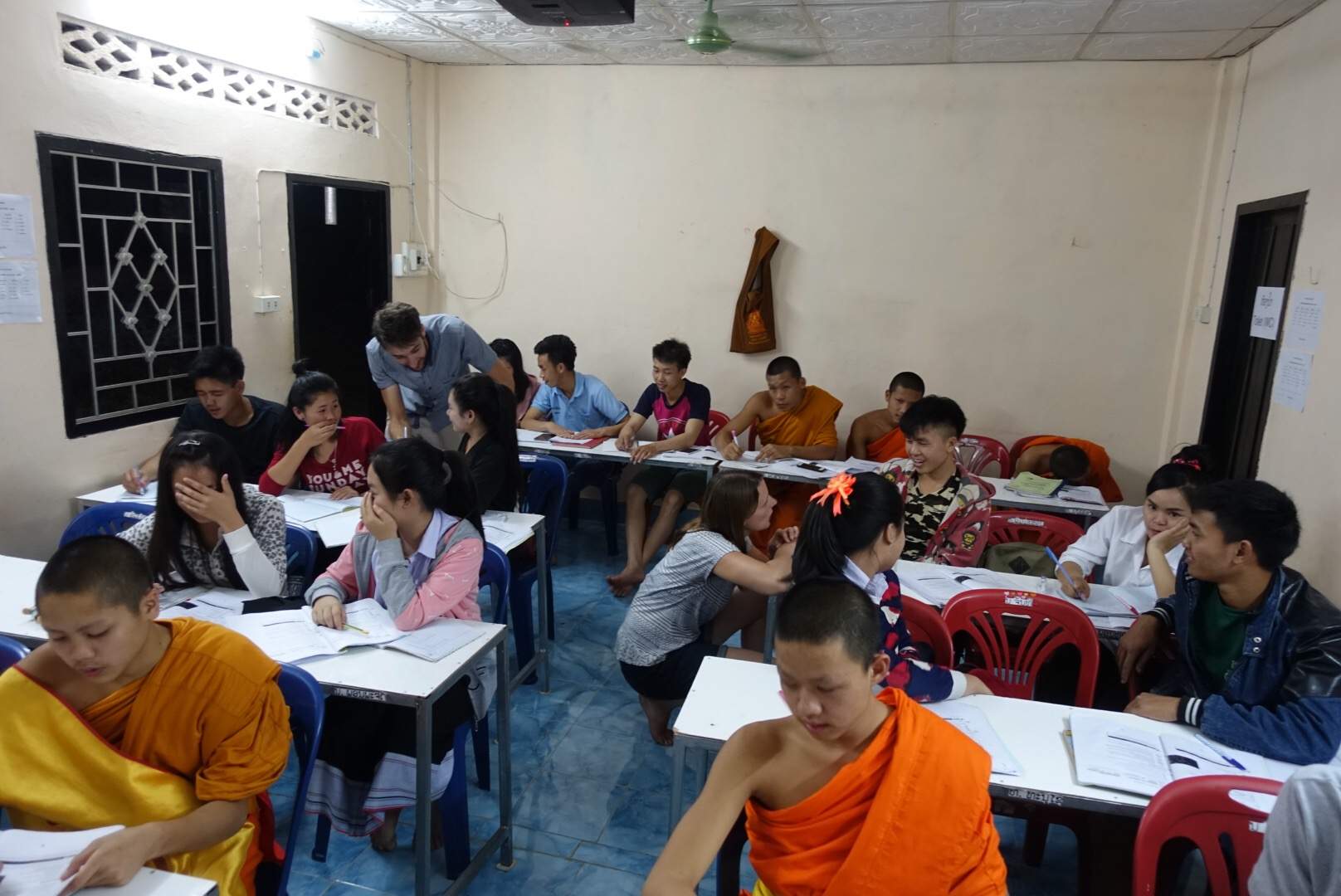
It turns out we will be teaching possessive pronouns after all. And for the next hour we led the whole lesson.
